London-based gallery ‘Littleton & Hennessy Asian Art’ will present two shows simultaneously this November, celebrating TEFAF New York Fall and Asian Art in London.

Treasures of Imperial China
1-5 November
Park Avenue Armory
643 Park Avenue, New York
For their TEFAF New York Fall exhibition the gallery has assembled an impressive group of unique and exquisite works of art, made specifically for the Chinese Imperial Court and its high-ranking officials.
One of the star pieces is a pair of carved wood, polychrome and gilt-lacquer panels depicting five-clawed dragons amongst auspicious ‘ruyi’ clouds (Qing Dynasty, Kangxi/Yongzheng period, early 18th century). During the Qing Dynasty, the use of five-clawed dragons was strictly limited to works of art made for the Emperor himself.

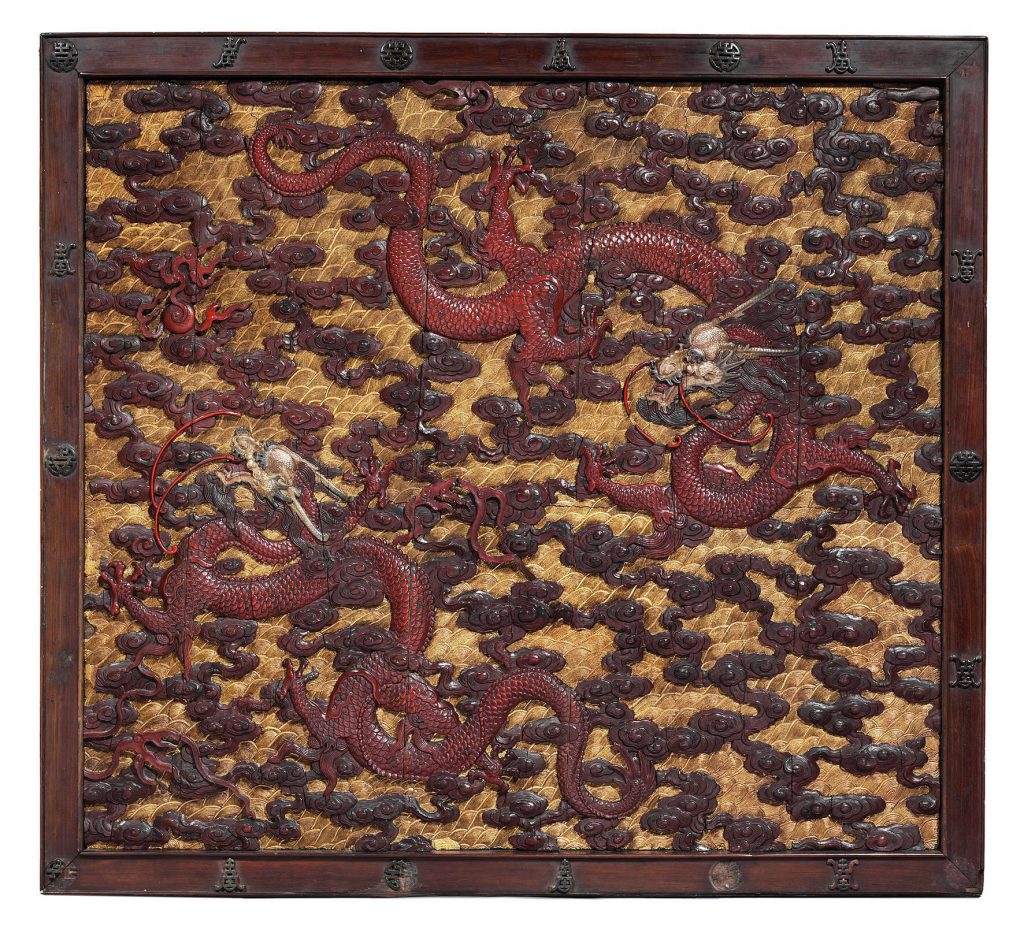
A pair of imperial carved wood, polychrome and gilt-lacquered ‘dragon’ panels (Kangxi/Yongzheng period, 18th century)
Dimensions: 115.5 x 125 cm
Provenance:
From the collection of Jacob Bendaman, a Spanish banker, purchased between the 1950s and 1960s
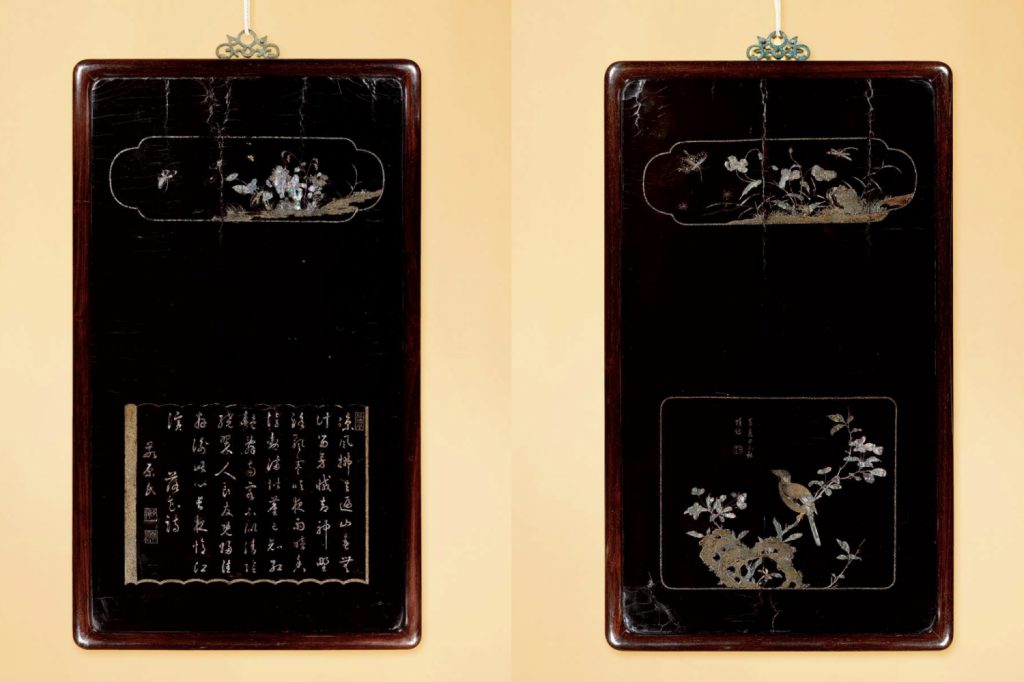
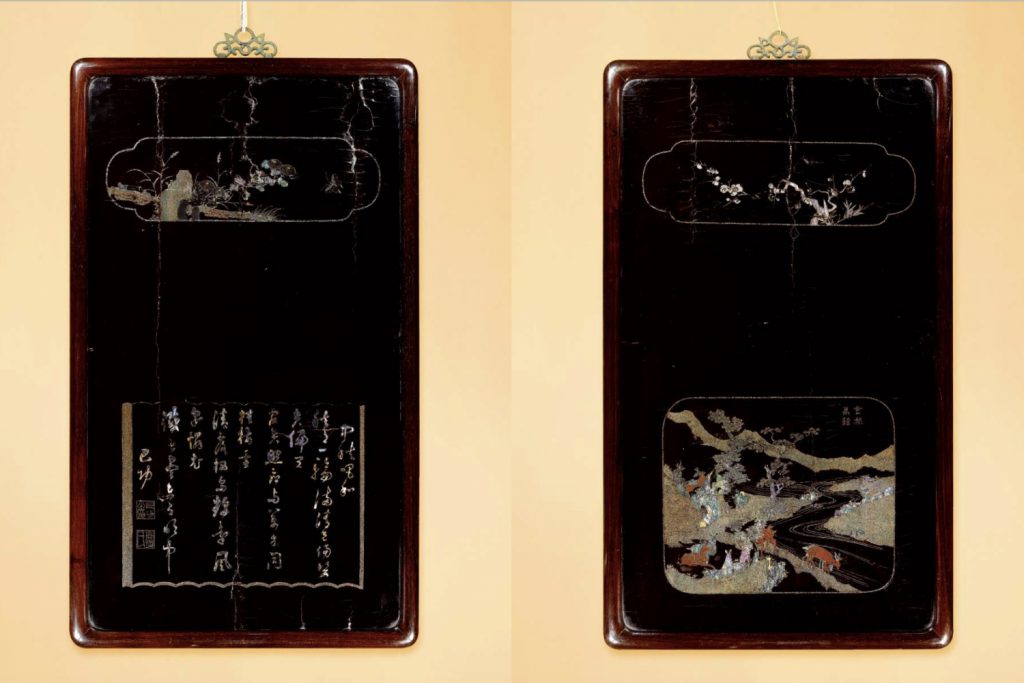
A set of four mother-of-pearl inlaid panels, signed Jiang Qianli (Late Ming/early Qing period, 17th century)
Dimensions: each 80cm high x 47cm wide
Published: ‘The Luxury of Chinese Lacquer’, Littleton & Hennessy Asian Art (March 2010)
The panels are of rectangular shape, each finely inlaid in mother-of-pearl and gold. Each are decorated variously with panels containing butterflies, birders, deer or poetic inscriptions.
Compare a set of five panels in the ‘Hebei Provincial Cultural Bureau’ also by Jiang Qianli. The use of gold and silver inlays alongside mother-of-peark in the Hebei panels is reminiscent of those on the current panels, as well as the style of inlay work. Furthermore, one of the current panels bears the name if Duo Lun (year unknown), an official of the Kangxi reign. His daughter married one of Kangxi’s grandsons, Prince Yong Xiang, and he went on to become the Right Vice Minister of The Board of Rites in 1756.
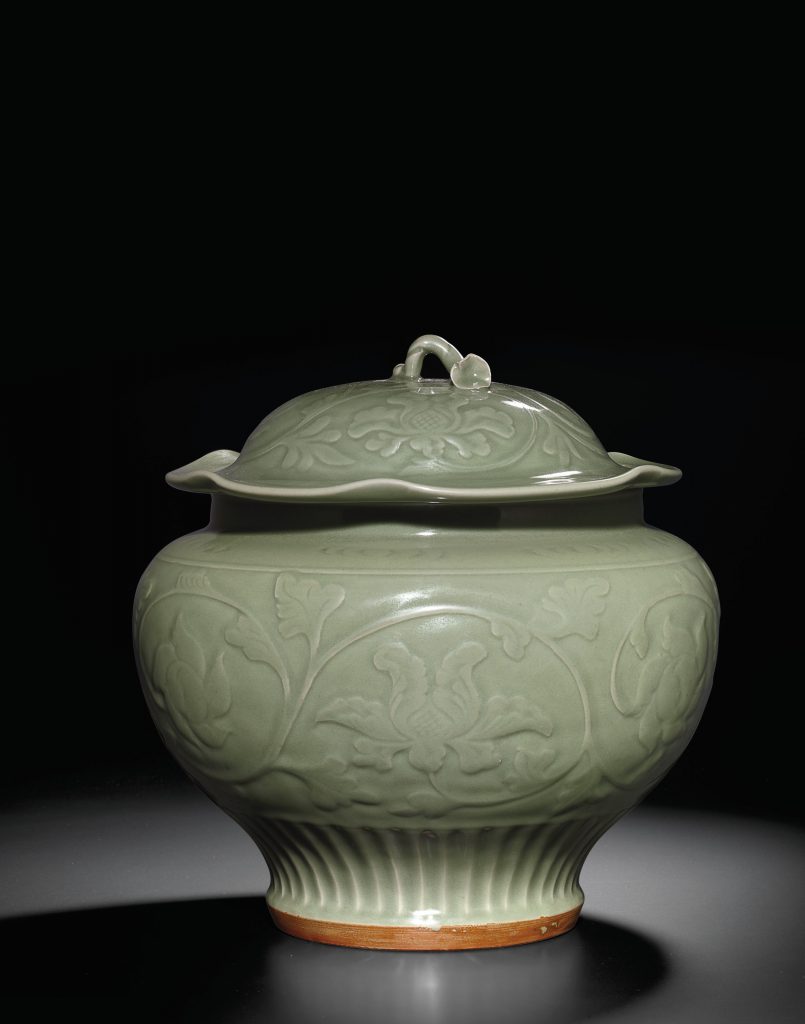
A carved Longquan celadon jar and cover (Yuan/early Ming dynasty)
Dimensions: 35.3cm high
Provenance:
– A private Irish collection
– Christie’s Hong Kong ‘Imperial Sale; Important Chinese Ceramics and Works of Art’, 29 May 2013 (lot 2243)
– Christie’s New York, 22 March 2012, lot 1971
– Christie’s London, 13 May 2008, lot 181
The well-potted globular body is carved with a wide band of composite foliate scroll above a band of upright petals. The cover is potted with undulating scalloped edges below a similar foliate scroll pattern, and is surmounted by a stem finial.
_____________________________________________

London Gallery (behind Christie’s)
1 Princes Place, Duke Street, St. James’s
London SW1Y 6DE
Highlight of their AAL exhibition is a rare miniature Beijing enamel ‘Hu’ vase (Qing Dynasty, Qianlong imperial seal mark and of the period, 18th century). This delicately painted vase measures only 5.7cm. It was made in the imperial workshops in Beijing and is decorated with ‘lingzhi’ and bats, symbolising longevity and happiness, in ‘Falangcai’ or foreign enamels.”
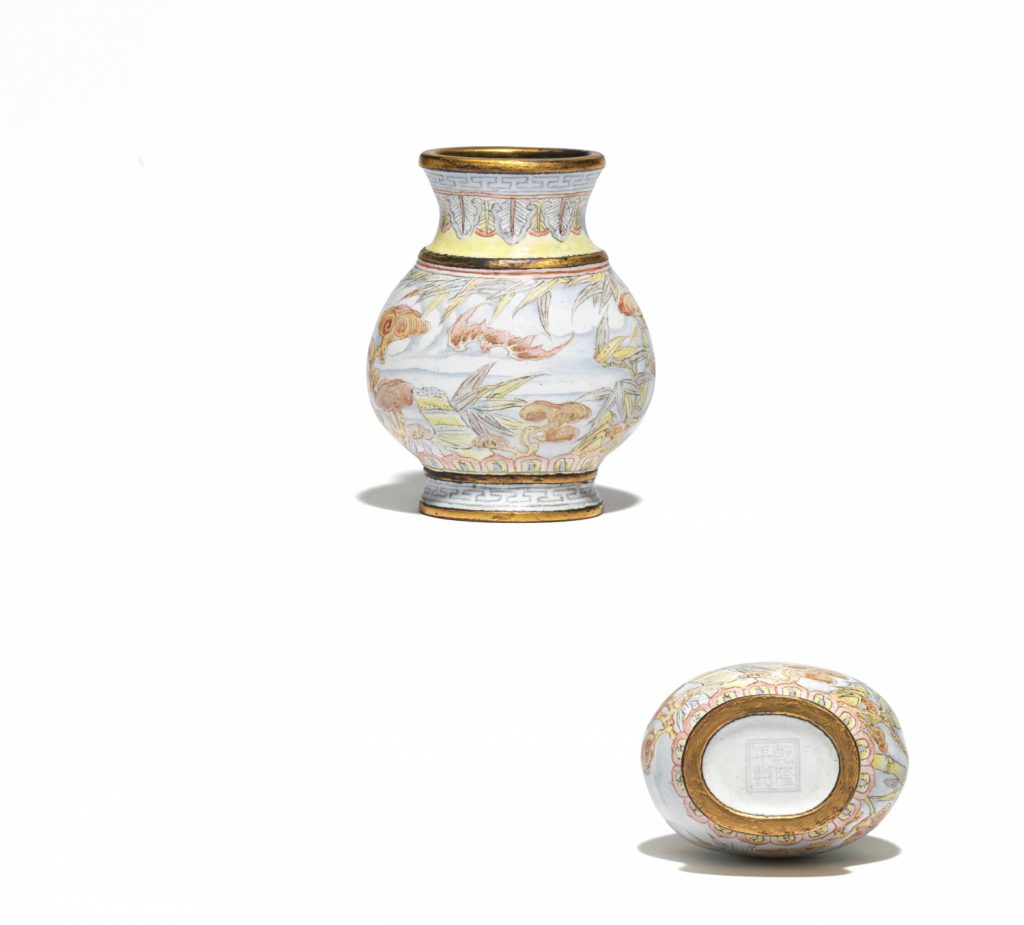
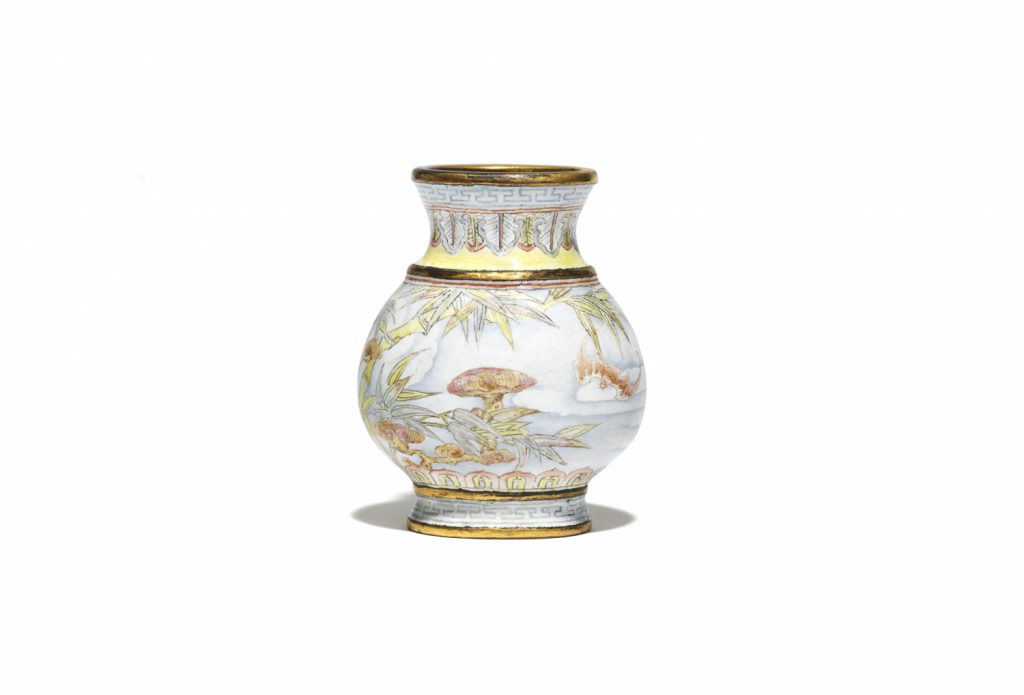
A rare miniature Beijing enamel gilt-copper ‘Hu’ vase decorated in ‘falangcai’ enamels (Qianlong mark and period)
Dimensions: 5.7cm high
Provenance:
– A private Asian collection
– A private English collection, acquired in London in the 1960s
Compare a similar copper vase in ‘falangcai’ enamels, decorated with peaches and bats (mark and period of Kangxi) in the Collection of the Palace Museum, Beijing. Illustrated in ‘The Complete Collection of Treasures of the Palace Museum, Metal-Bodied Enamel Ware’, Hong Kong 2002, pl. 174, p. 183.
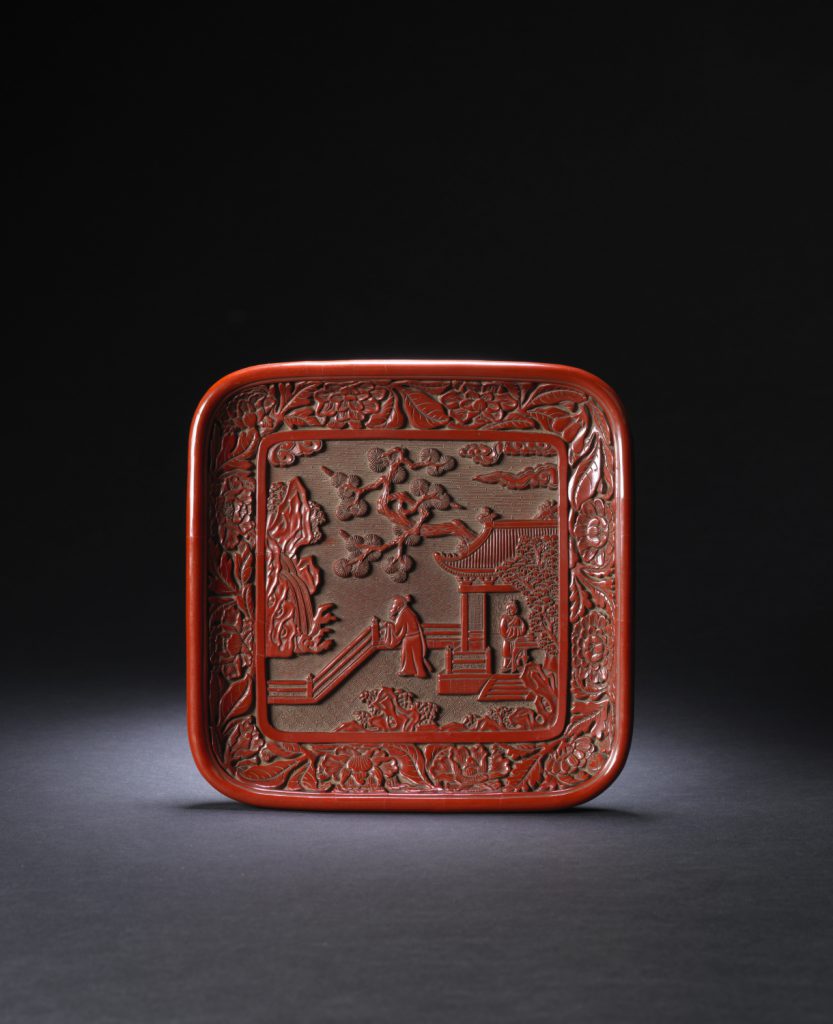
A very rare cinnabar lacquer square dish (Ming dynasty, early 15th century)
Dimensions: 17.8cm square
Japanese wood box and cover
Provenance:
– Bonhams Hong Kong, Fine Chinese Ceramics and Works of Art, 27 November 2014 (lot 148)
– The property of an English gentleman
The dish is finely carved with a band of flowers, around a courtyard scene within a square panel. The scene depicts a scholar standing beneath a pine tree admiring a waterfall surrounded by rockwork. His attendant patiently waits inside the pavilion beside a table. The scene is intricately carved and set on a diaper ground.
Compare a Xuande mark and period cinnabar lacquer circular box and cover, with similar design composition, diaper grounds, and bands of flowers and leaves, is illustrated in Carving the Subtle Radiance of Colors, Treasured Lacquerware in the National Palace Museum, Taipei, 2008, p.49, no.29. Compare also a Yongle period box and cover with the same decorative theme, of a scholar within a courtyard admiring a waterfall, is illustrated in The Complete Treasures of the Palace Museum: Lacquer Wares of the Yuan and Ming Dynasties, Hong Kong, 2006, p.64, no.43.
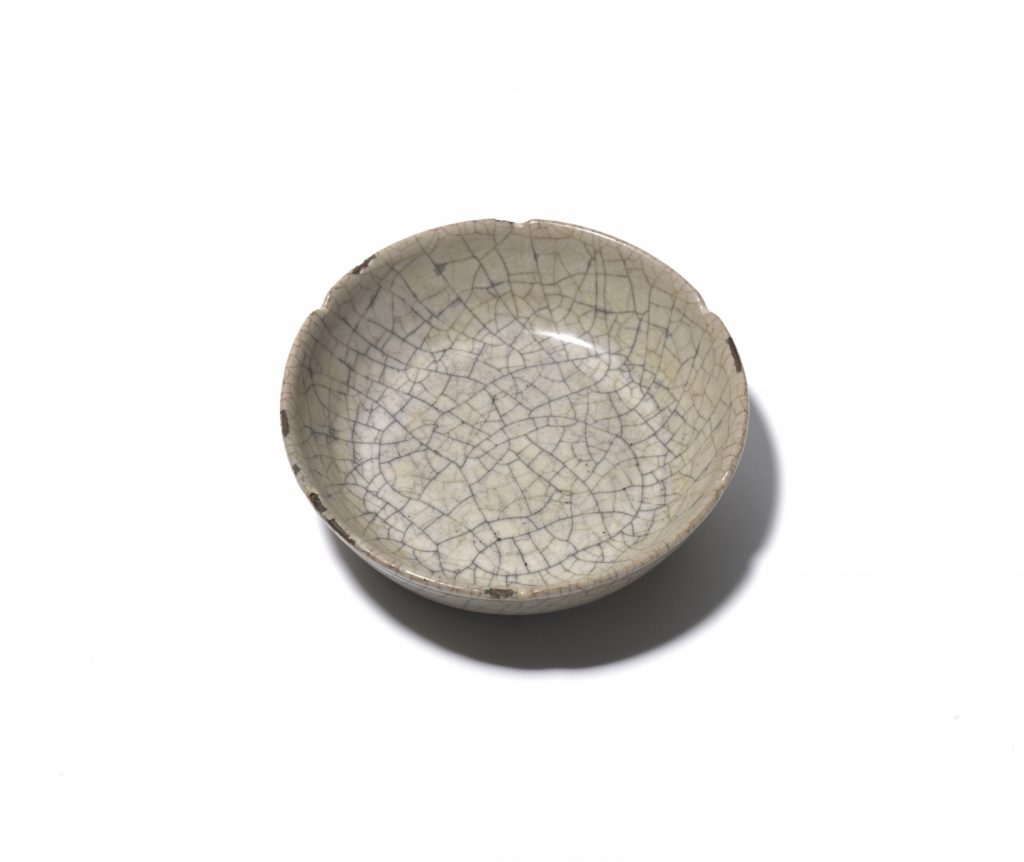
A lobed ‘Guan’-type circular washer (Southern Song/Yuan dynasty)
Dimensions: 12.3cm diameter
Provenance:
– Sir Herbert Ingram Collection (part label)
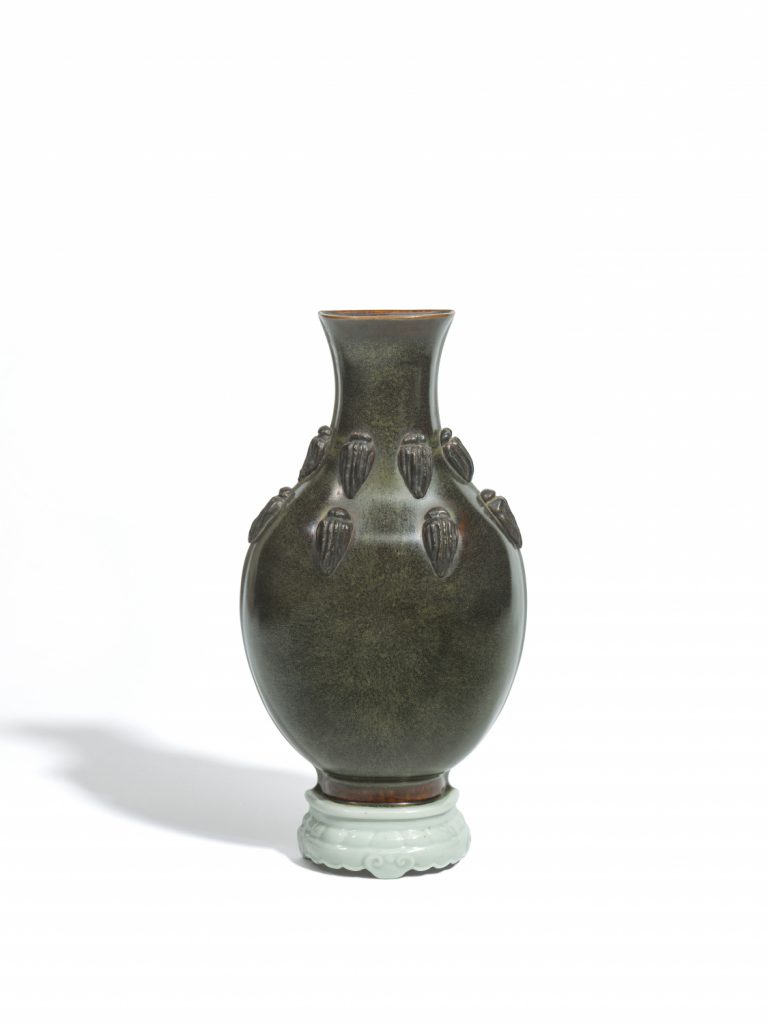
A black-glazed trompe l’eoil wall vase with applied cicadas on a faux-ivory celadon stand (Qing dynasty, 19th century)
Dimensions: 16.5cm high
Provenance:
– An English private collection
– Mary Wise (label)
– G.B. Warner Collection (label)
Cicadas are associated with the onset of summer and symbolises rebirth and immortality in Chinese art. Compare a similar wall vase in our exhibition dated to the 18th century, Qianlong period, from the collection of Baron Nathaniel de Rothschild (Palais Abbatial de Royaumont), sold at Christie’s Paris (September 2011)

